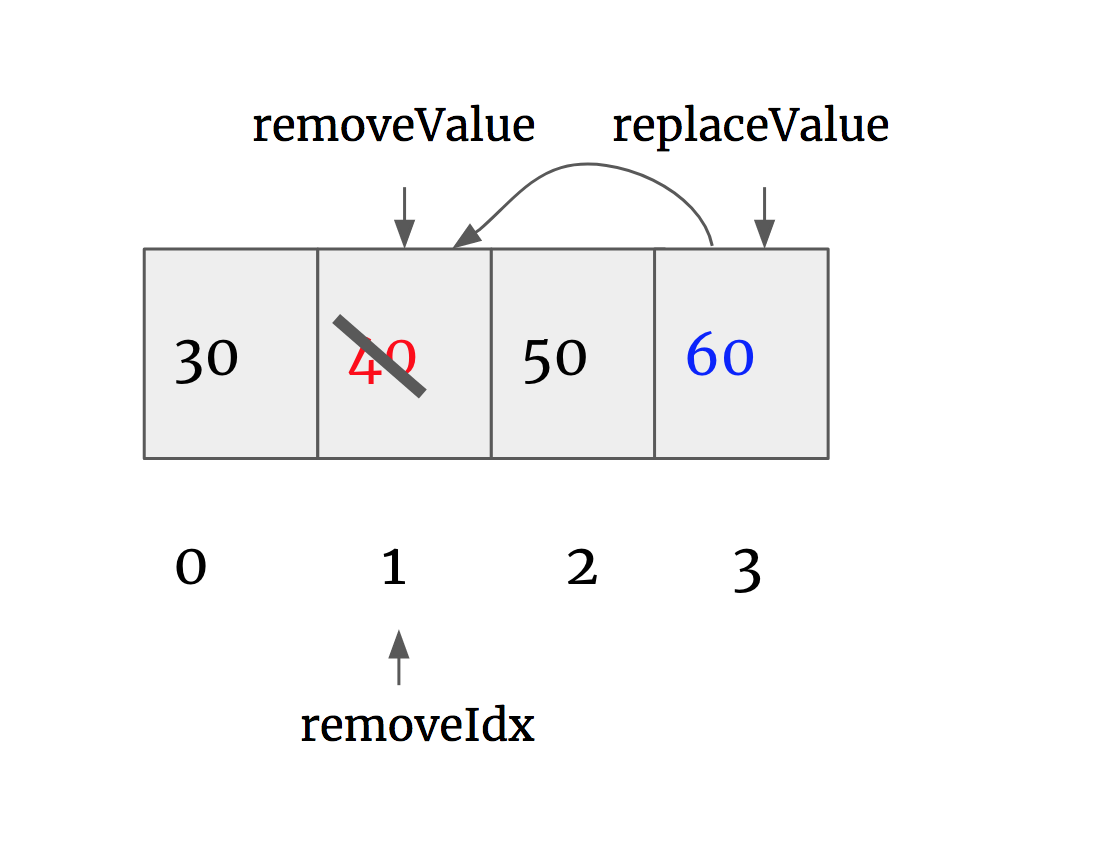Design a data structure that supports all following operations in average O(1) time.
insert(val): Inserts an item val to the set if not already present.remove(val): Removes an item val from the set if present.getRandom: Returns a random element from current set of elements. Each element must have the same probability of being returned.
Example:
// Init an empty set. RandomizedSet randomSet = new RandomizedSet(); // Inserts 1 to the set. Returns true as 1 was inserted successfully. randomSet.insert(1); // Returns false as 2 does not exist in the set. randomSet.remove(2); // Inserts 2 to the set, returns true. Set now contains [1,2]. randomSet.insert(2); // getRandom should return either 1 or 2 randomly. randomSet.getRandom(); // Removes 1 from the set, returns true. Set now contains [2]. randomSet.remove(1); // 2 was already in the set, so return false. randomSet.insert(2); // Since 2 is the only number in the set, getRandom always return 2. randomSet.getRandom();
Solution1: HashMap + ArrayList
1. use an ArrayList together with HashMap, making hashmap save key(item)->value(idx)
2. To reverse item in O(1), avoiding traversal the whole arrayList in O(n) time, we swap the toDelete item with last item in the list
3. Go through an example like this:

use HashMap to get removeIdx:

Set the last item in the list as replaceValue, why the last item? In order to maintain other indices.

Deal with HashMap: (1) put (2)delete

Deal with List: (1) set (2)delete

code:
1 class RandomizedSet { 2 Map<Integer, Integer> map; 3 List<Integer> list; 4 Random r; // java 自带类 5 6 /** Initialize your data structure here. */ 7 public RandomizedSet() { 8 list = new ArrayList<>(); 9 map = new HashMap<>(); 10 r = new Random(); 11 } 12 13 /** Inserts a value to the set. Returns true if the set did not already contain the specified element. */ 14 public boolean insert(int val) { 15 if (map.containsKey(val)) { 16 return false; 17 } 18 map.put(val, list.size()); 19 list.add(val); 20 return true; 21 } 22 23 /** Removes a value from the set. Returns true if the set contained the specified element. */ 24 public boolean remove(int val) { 25 /** 26 hashmap 27 30 - 0 28 40 - 1 29 50 - 2 30 60 - 3 31 32 list: 30 40 50 60 33 0 1 2 3 34 **/ 35 if (!map.containsKey(val)) return false; 36 int removeIdx = map.get(val); // Idx: 1 37 int replaceValue = list.get(list.size()-1); // replaceValue : 60 38 39 // deal with map 40 map.put(replaceValue, removeIdx); 41 map.remove(val); 42 43 // deal with list 44 list.set(removeIdx, replaceValue); 45 list.remove(list.size() -1); 46 47 return true; 48 } 49 50 /** Get a random element from the set. */ 51 public int getRandom() { 52 return list.get(r.nextInt(list.size())); 53 } 54 }